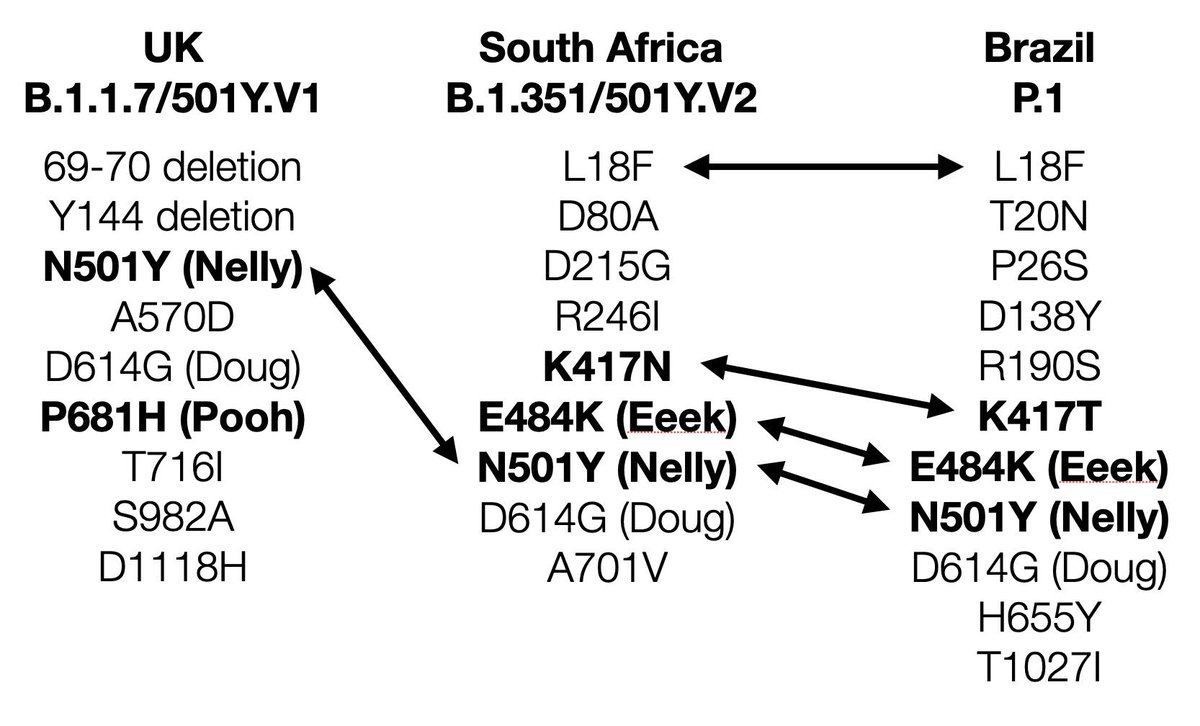
(1/6) This is quite a concerning development. An additional mutation (E484K; a key mutation in the South African variant) has now also been detected in a limited number of people infected with the UK variant.
Laboratory experiments suggest vaccine efficacy may be reduced.
Laboratory experiments suggest vaccine efficacy may be reduced.
https://twitter.com/kakape/status/1356506916873207809
(2/6) Here’s a nice figure from @K_G_Andersen, showing the different mutations in the UK, South African, & Brazilian variants.
E484K has now also appeared in multiple people in the UK, suggesting a process of convergent evolution. This means it’s likely to happen elsewhere, too.
E484K has now also appeared in multiple people in the UK, suggesting a process of convergent evolution. This means it’s likely to happen elsewhere, too.

(3/6) So far, this enhanced UK variant has been detected in 11 of 214,159 samples tested.
The E484K mutation previously appeared in a cluster of 32 cases of the original strain in Liverpool.
bbc.com/news/health-55…
The E484K mutation previously appeared in a cluster of 32 cases of the original strain in Liverpool.
bbc.com/news/health-55…
(4/6) There’s a real danger this will threaten vaccine efficacy if allowed to spread.
We’ve seen efficacy of the Novavax vaccine drop from 95% against the original strain, to 60% against the South African variant (49% if people with HIV are included).
We’ve seen efficacy of the Novavax vaccine drop from 95% against the original strain, to 60% against the South African variant (49% if people with HIV are included).
https://twitter.com/drzoehyde/status/1355020446505156614?s=21
(5/6) This means at least two things:
First, it’s imperative that governments adopt a #ZeroCOVID strategy. We cannot risk continued evolution of the virus on such a widespread scale.
Second, the preferential use of high-efficacy vaccines is becoming increasingly important.
First, it’s imperative that governments adopt a #ZeroCOVID strategy. We cannot risk continued evolution of the virus on such a widespread scale.
Second, the preferential use of high-efficacy vaccines is becoming increasingly important.
(6/6) The most recent report on the UK variant (which mentions the emergence of E484K), can be found on this page in briefing number 5:
gov.uk/government/pub…
gov.uk/government/pub…
• • •
Missing some Tweet in this thread? You can try to
force a refresh









